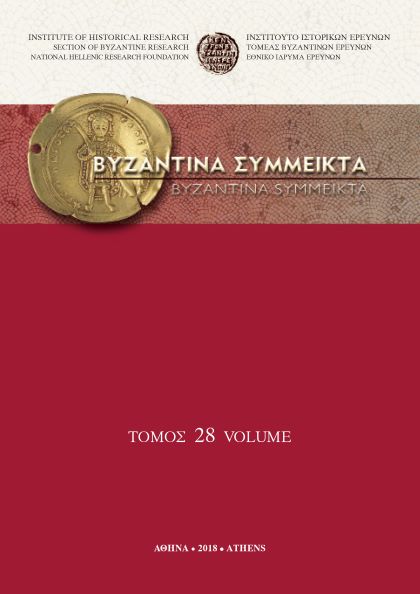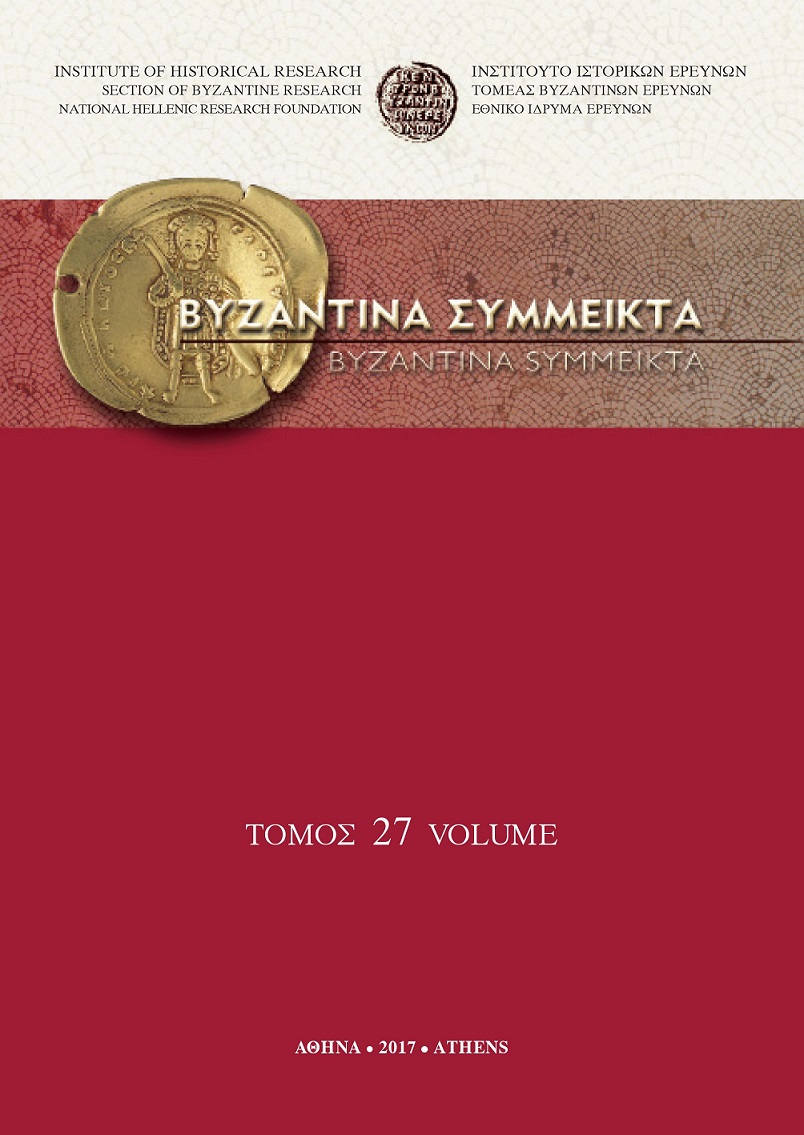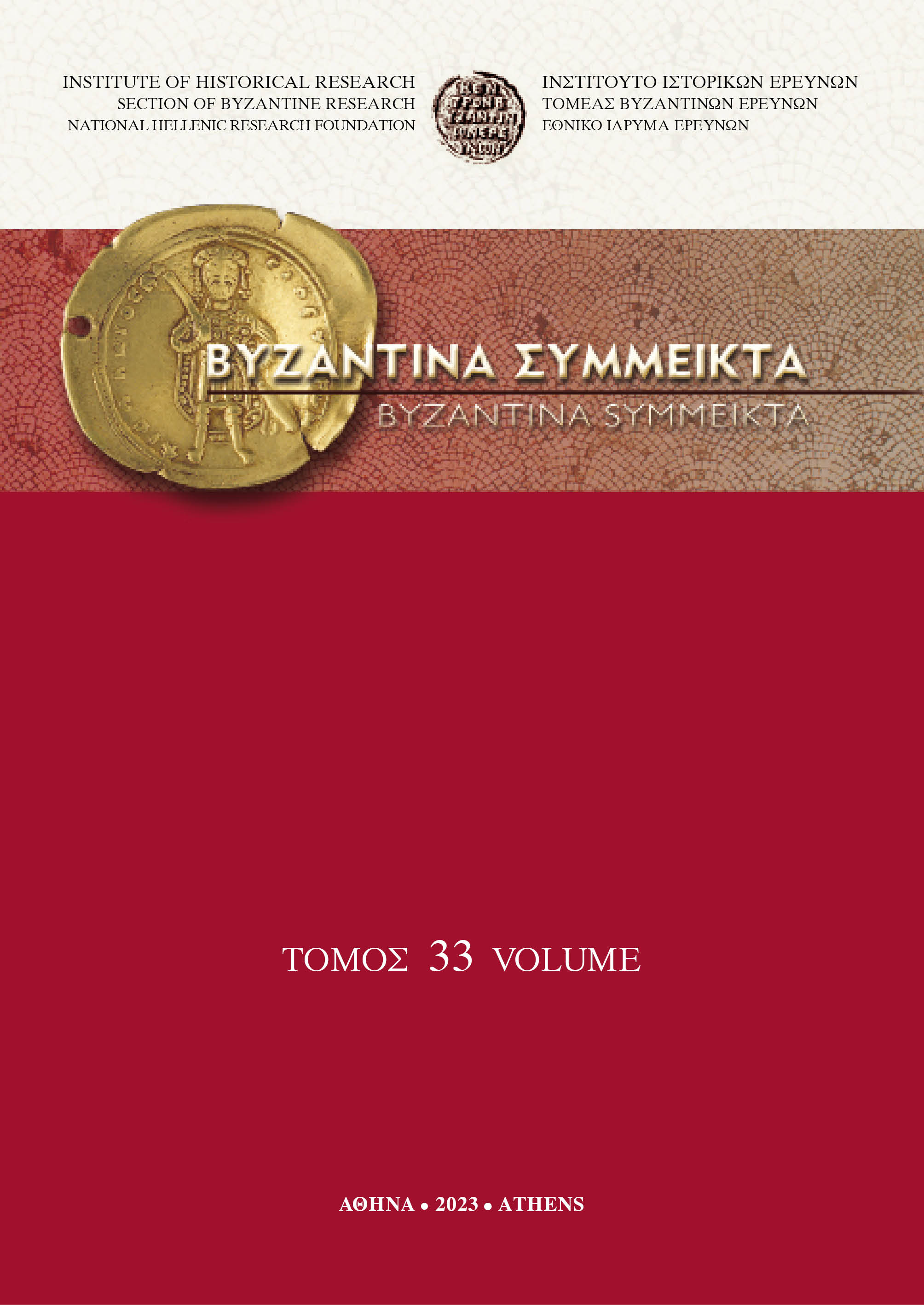Μαρτυρίες ιστορικών πηγών και αρχαιολογικών ευρημάτων για μια μορφή "βιολογικού" πολέμου με τη χρήση των μελισσών στο Βυζάντιο

Abstract
EVIDENCE FROM WRITTEN SOURCES AND ARCHAEOLOGICAL FINDS FOR A TYPE OF “BIOLOGICAL WAR” USING BEES IN BYZANTIUM
The use of animals as a military weapon, particularly the sting of bees, doesn’t consist an invention of the Middle Ages. It is traced as early as the biblical times. First references are recorded during the Roman campaigns in the region of Pontus, while the lethal biological weapon of bees was further developed as a method of defense and attack mainly in the West, and especially during the Crusaders’ sieges.
In all probability, Byzantium employed biological weapons, including bees,following roman practices. Literary sources from Patristic to historiographical texts and Saints’ Lives refer to the effect of smoke on bees, in a parabolic manner, and recognize the bees’ sting as a devious device against real enemies (e.g.barbarians) and invisible opponents (demons). Byzantine writers applauded the use of such insidious methods of warfare, on the other hand, the admiration of a victory, based on vigour and bravery was highly appreciated.
Archaeological finds which could shed more light to this practice are scarce but indicative. Cylindrical earthenware vessels were the most common type of early Byzantine beehives, identified by the shallow incisions in the inner surface of the walls. Four intact samples of this type of pottery were found inside a tower of the Hexamilion Fortress at Isthmia (6th century), one of the most important military complexes of Justinian period. The unexpected location and the specific artifact types suggest alternative interpretations for their use, among them their possible military use.
This paradox aspect of biological war did not die out, instead it inspired much more elaborated, devious methods of warfere in the aftermath of the Middle Ages.
Article Details
- How to Cite
-
ΓΕΡΜΑΝΙΔΟΥ Σ. (2013). Μαρτυρίες ιστορικών πηγών και αρχαιολογικών ευρημάτων για μια μορφή "βιολογικού" πολέμου με τη χρήση των μελισσών στο Βυζάντιο. Byzantina Symmeikta, 23, 91–104. https://doi.org/10.12681/byzsym.1046
- Issue
- BYZANTINA SYMMEIKTA 23
- Section
- Articles

This work is licensed under a Creative Commons Attribution-NonCommercial-ShareAlike 4.0 International License.
Copyright: The copyright for articles in this journal is retained by the author(s), with first publication rights granted to the journal. By virtue of their appearance in this open access journal, articles are free to use (with the exception of the non-granted right to make derivative works) with proper attribution for non-commercial uses (licence Creative Commons 4.0). NHRF retains the worldwide right to reproduce, display, distribute, and use articles published in BYZANTINA SYMMEIKTA in all formats and media, either separately or as part of collective works for the full term of copyright. This includes but is not limited to the right to publish articles in an issue of the Journal, copy and distribute individual reprints of the articles, authorize reproduction of articles in their entirety in another NHRF publication, and authorize reproduction and distribution of articles or abstracts thereof by means of computerized retrieval systems.





